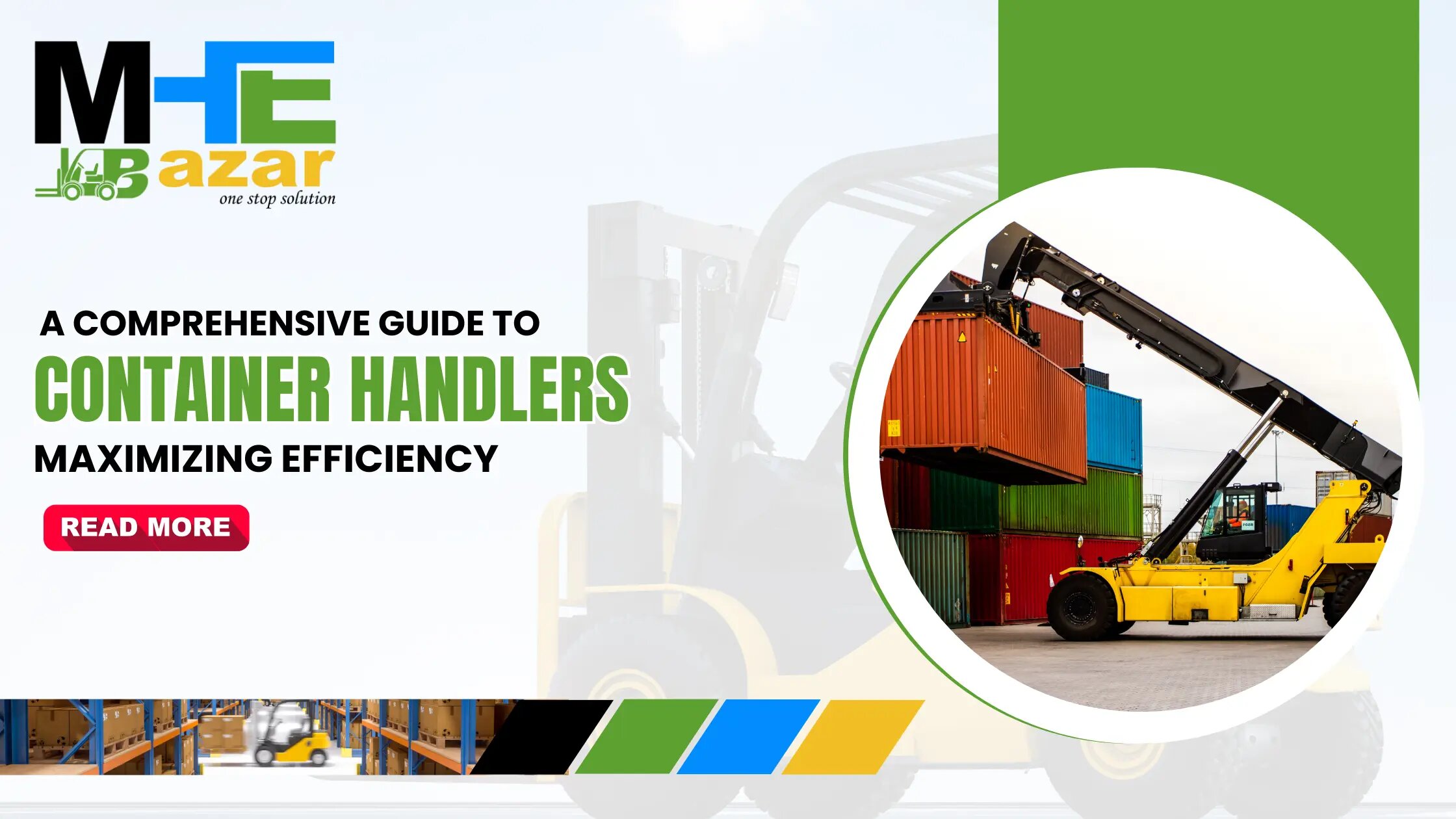Introduction To Container Handlers
Container handlers are integral to modern logistics and supply chain management, serving as the backbone of operations in ports, warehouses, and distribution centers. These specialized machines are designed to lift, move, and stack large containers with precision and efficiency. As global trade continues to expand, the demand for effective container handling solutions has never been greater.
Understanding the role of container handlers requires an appreciation for their versatility and capabilities. They come in various forms—reach stackers, gantry cranes, straddle carriers, and more—each engineered to meet specific logistical challenges. For instance, reach stackers offer flexibility with their ability to quickly transport containers over short distances and stack them in multiple rows. On the other hand, gantry cranes are essential for loading and unloading ships efficiently at bustling ports.
Technological advancements have further enhanced the functionality of these machines. Modern container handlers now boast features like automated systems for improved accuracy, fuel-efficient engines to reduce operational costs, and advanced safety mechanisms to protect both operators and cargo.
In this Comprehensive Guide to Container Handlers, we will delve into their types, functionalities, technological integrations, best practices for operation, maintenance strategies, and future trends shaping this critical industry sector.
Types Of Container Handling Equipment
Container handling equipment is pivotal in streamlining operations within ports, terminals, and intermodal yards. Among the various types of machinery, each serves a distinct purpose tailored to specific handling needs, thus maximizing efficiency across different stages of cargo management.
Reach stackers are versatile machines known for their ability to lift containers swiftly and stack them in various rows and heights. Their mobility and flexibility make them ideal for small to medium-sized terminals where space optimization is crucial.
Straddle carriers, on the other hand, offer significant advantages in high-density stacking scenarios. These machines straddle containers and can transport them over longer distances within the terminal premises. Their design allows for efficient movement even in tight spaces, contributing to improved yard utilization.
For large-scale operations requiring rapid loading and unloading from ships, rubber-tired gantry cranes (RTGs) are indispensable. These cranes can handle multiple containers simultaneously, significantly reducing vessel turnaround times. They operate on wheels that facilitate movement across the yard while providing stability during heavy lifts.
In rail-yard environments, rail-mounted gantry cranes (RMGs) excel by bridging the gap between different modes of transportation efficiently. Their fixed path operation ensures precision in container placement while integrating seamlessly with automated systems for enhanced productivity.
Each type of container handling equipment plays a unique role in optimizing terminal operations, ensuring that cargo moves swiftly and efficiently from one point to another.
Key Features And Capabilities Of Modern Container Handlers
Modern container handlers are marvels of engineering, designed to meet the rigorous demands of contemporary logistics and shipping industries. One key feature is their advanced automation systems, which allow for precise control and monitoring. These systems often include GPS tracking, real-time data analytics, and automated guided vehicle (AGV) technology that minimizes human intervention while optimizing performance.
Another critical capability is their adaptability to various container sizes and weights. Modern handlers can effortlessly switch between different types of containers, be it 20-foot or 40-foot units, without sacrificing speed or efficiency. This adaptability is further enhanced by hydraulic systems that offer superior lifting capacity and stability even under heavy loads.
Energy efficiency also plays a pivotal role in modern container handlers. Many are equipped with hybrid or electric engines that significantly reduce fuel consumption and emissions. This not only lowers operational costs but also aligns with global sustainability goals.
Moreover, these machines come with ergonomic designs aimed at enhancing operator comfort and safety. Features such as adjustable seats, intuitive controls, and comprehensive visibility reduce fatigue and the risk of accidents.
In essence, modern container handlers combine automation, adaptability, energy efficiency, and ergonomic design to maximize operational efficiency in today’s fast-paced logistics environment.
Best Practices For Optimizing Container Handler Operations
Optimizing container handlers operations involves a combination of strategic planning, technology integration, and continuous improvement practices. A fundamental aspect is the implementation of real-time tracking systems. These systems provide invaluable data on container movements, enabling operators to streamline logistics and reduce idle times. By leveraging advanced software solutions, organizations can predict peak times and allocate resources more effectively.
Moreover, regular maintenance of equipment is crucial. Preventative maintenance schedules ensure that machinery operates at peak efficiency and reduces the likelihood of unexpected breakdowns that can disrupt operations. Training personnel is equally vital; well-trained operators are adept at handling equipment safely and efficiently, which minimizes downtime and enhances productivity.
Incorporating automation technologies can also lead to significant improvements in efficiency. Automated guided vehicles (AGVs) and robotic arms can handle repetitive tasks with precision, reducing human error and increasing throughput rates. Additionally, optimizing yard layouts for smoother traffic flow and minimizing unnecessary container moves can drastically cut down operational time.
Finally, fostering a culture of continuous improvement encourages staff to identify inefficiencies proactively and suggest practical solutions. Regular performance reviews combined with feedback loops allow for adaptive strategies that keep operations aligned with evolving demands. Through these concerted efforts, organizations can substantially enhance the efficiency of their container handler operations.
Maintenance And Safety Protocols For Container Handlers
Maintenance and safety protocols for container handlers are critical to ensuring the longevity of equipment and the safety of personnel. Regular maintenance checks should be conducted to inspect various components, including hydraulics, brakes, tires, and lifting mechanisms. These inspections help in identifying wear and tear early, preventing unexpected breakdowns that could halt operations.
Lubrication of moving parts is another essential aspect. Ensuring that all joints and bearings are well-lubricated reduces friction and wear, thereby extending the lifespan of the equipment. Additionally, it is imperative to keep electronic systems up-to-date with software updates to enhance operational efficiency and safety features.
Technological Innovations In Container Handling
Technological innovations in container handling have revolutionized the logistics and shipping industry, driving efficiency to unprecedented levels. One of the most transformative advancements is the integration of automated guided vehicles (AGVs) and automated stacking cranes (ASCs). These technologies minimize human error and enhance precision, enabling seamless operations 24/7. AGVs navigate complex port environments using advanced sensors and machine learning algorithms, ensuring optimal routing and reducing turnaround times.
Another pivotal innovation is the implementation of Internet of Things (IoT) devices within container terminals. IoT sensors provide real-time data on container status, location, and environmental conditions. This connectivity allows for predictive maintenance, reducing downtime due to equipment failure. Additionally, blockchain technology is being leveraged to enhance transparency and security in container tracking. By creating immutable records of each container’s journey, blockchain mitigates risks associated with fraud and discrepancies.




